More than a year ago I took a hike along the Green Mountain Escarpment (Vermont) in search of an old mine. I had read in an old report that Indiana bats hibernated in a mine in the area, and that was enough of an excuse to go exploring. I watched a bear and two cubs for 15 minutes but never found a mine. It was a pleasant hike along old logging roads through private property. No one lived on the several properties I traversed, none of which was posted.

A year later I found new information about where the mine might be and decided to try again. Galen and I walked directly to a place with a network of old roads at the base of a series of bedrock cliffs that appeared to have been worked by miners. There was no evidence of rock drilling or talus, just shallow caves (Figure 2) in vertical rock walls that seemed to follow quartz veins. Ores of precious metals in Vermont are often found along veins of quartz, and there were lots of quartz veins near the caves (Figure 3).
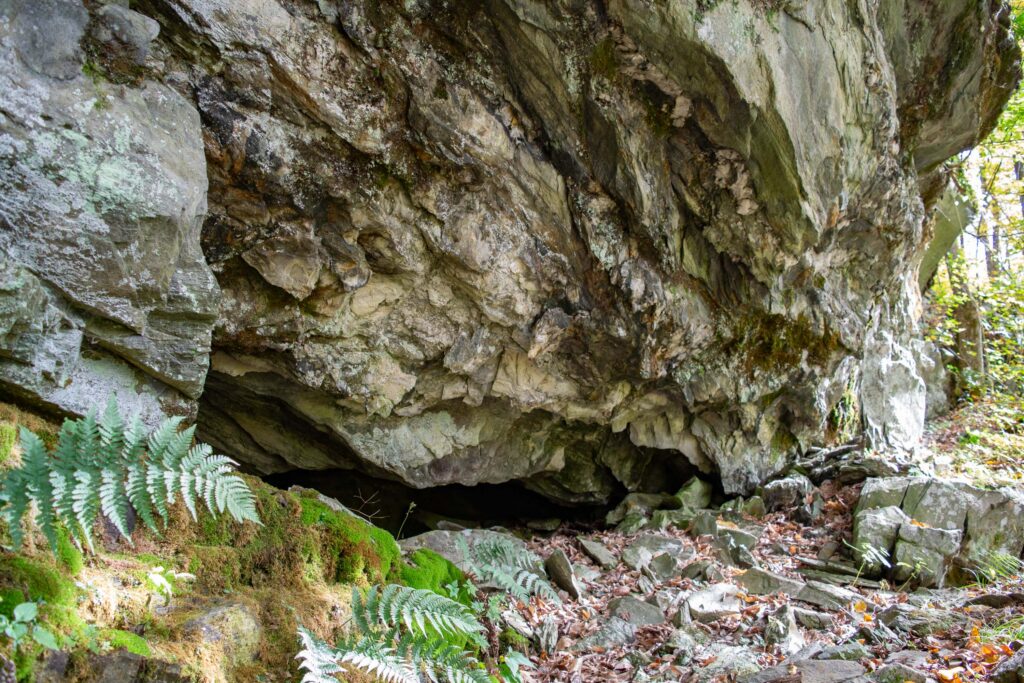
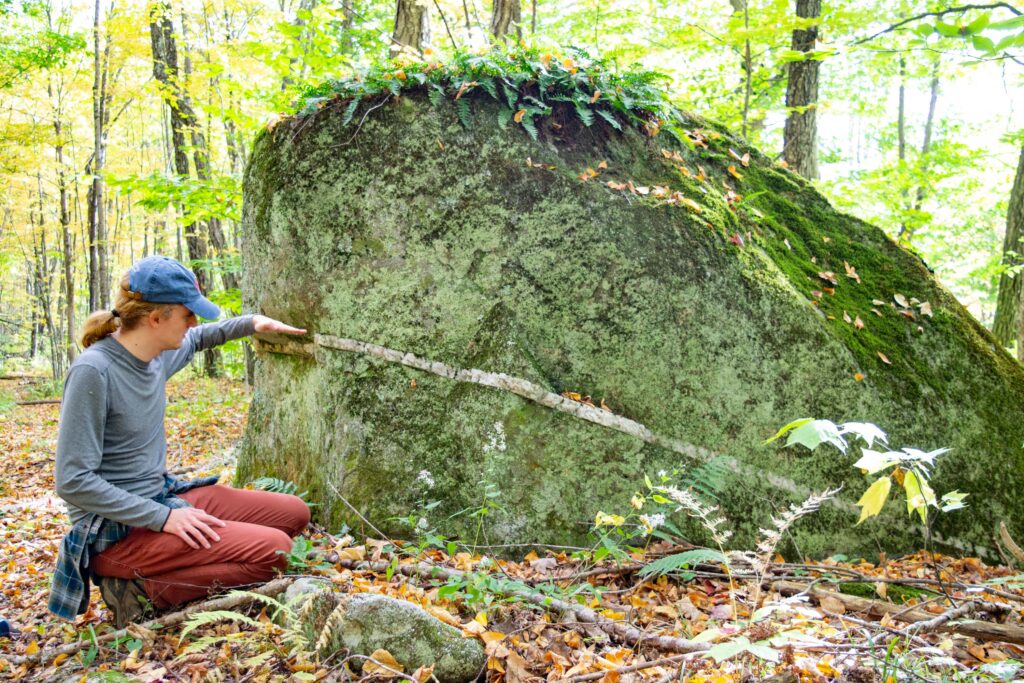
None of the caves seemed to penetrate the rock more than several feet so there was no indication that they would be suitable for bat hibernation. But we had with us something I did not have a year earlier. We had two AudioMoths, devices capable of recording the ultrasonic calls of bats. We left an AudioMoth near the putative mining activity and another in the nearby meadow 100 feet below (Figure 1). Both were programmed to listen for sounds on and off during the night and to record for at least 10 seconds after each loud sound. The AudioMoths listened every night for eight days (Figure 4). In the middle of October Vermont’s bats have changed their routine and may be swarming near their hibernation sites and breeding before they begin hibernation. Near a hibernation site it might be possible to observe (or record) many bats flying at night.
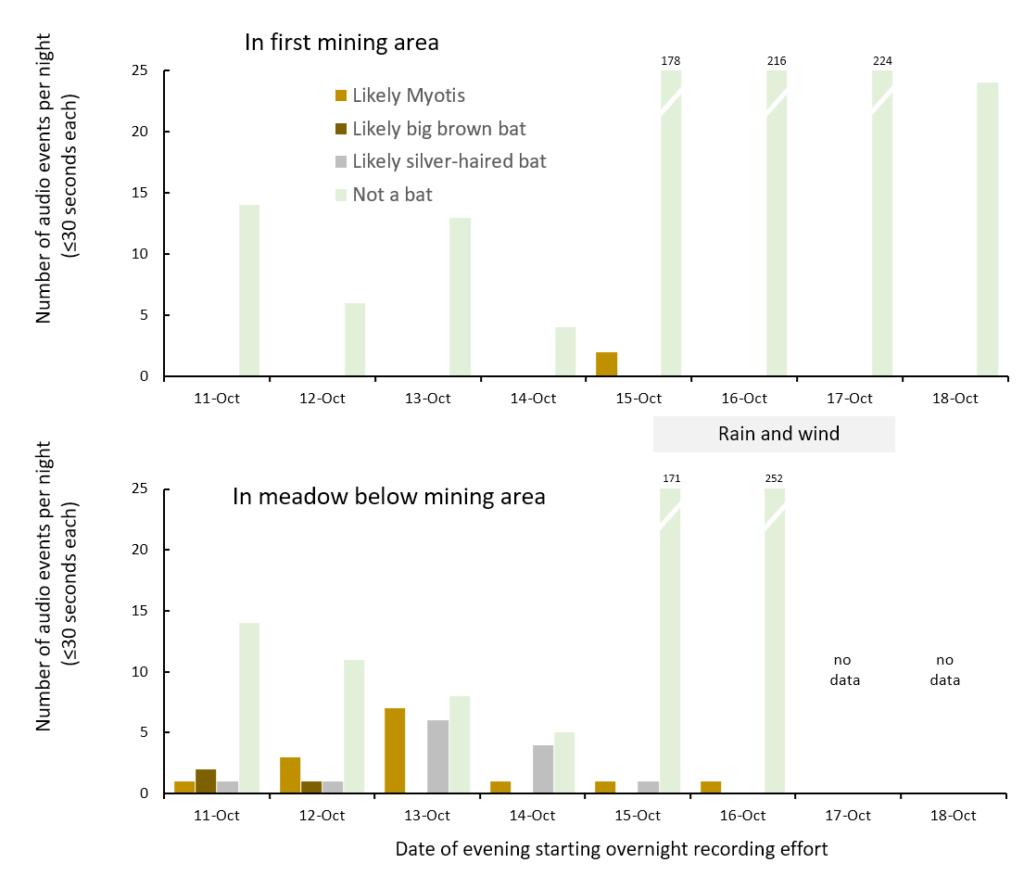
The recordings on both AudioMoths produced 1172 files from more than 26 hours of listening over eight days. Only 32 of these audio files were of bat calls (Figure 4). Only two of the bat calls were recorded near the shallow caves. Most of the bat calls were recorded in the wetland meadow which should be better feeding habitat for bats than the forested mining area. But the number of calls recorded was a fraction of what might be expected on a summer night in good habitat. On October 14 Galen and I visited the site after dark and listened for bats with an Echo Meter Touch 2. A phone app identifies bat calls picked up by the ultrasonic microphone plugged into the phone’s USB port. Confirming the AudioMoth results, we heard no bats near the mining area and a few (silver haired bat, Myotis sp.) in the meadow.
These results suggest that a few bats were still active but there was not any bat swarming happening near the mining site. So I decided to move the AudioMoths about a half mile to a site where another mine was supposed to be. On October 19 I retrieved both AudioMoths, swapped the SD cards and batteries, and deployed them at the new site.
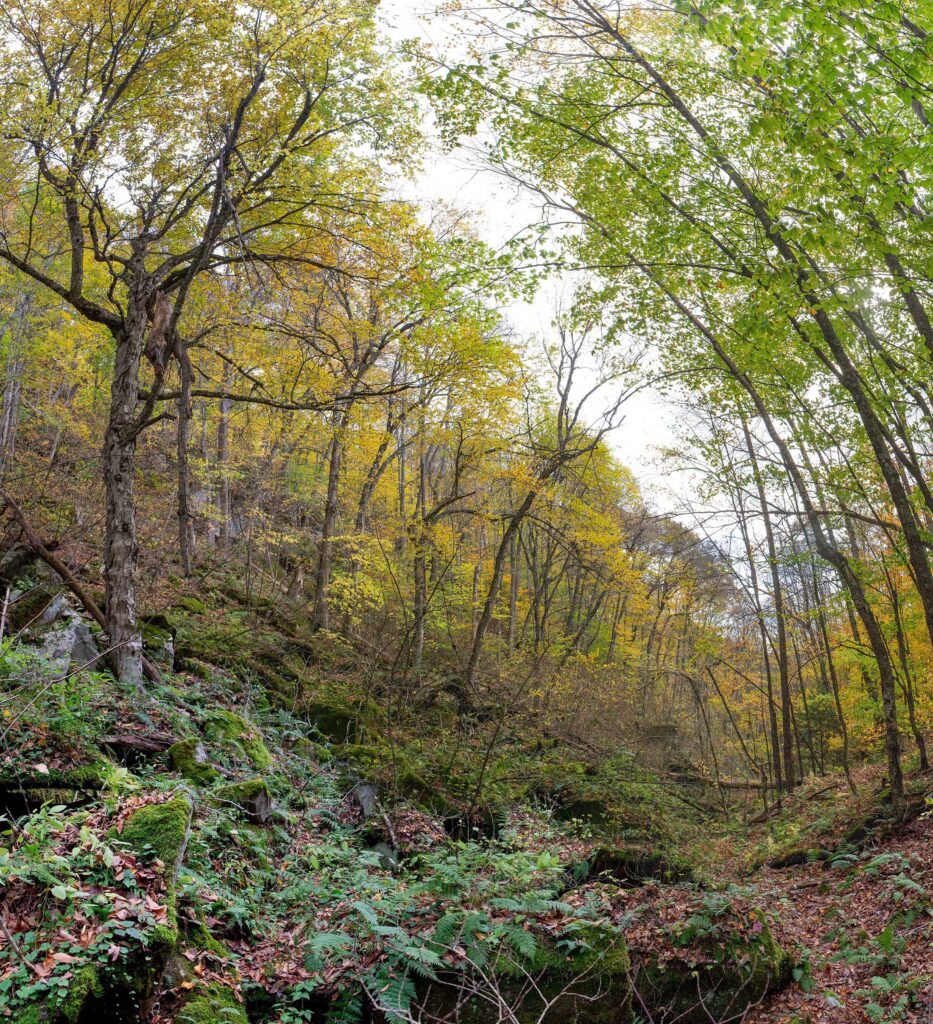
The second mining area had old roads switch-backing up a steep slope to vertical cliffs of bedrock. This looked promising, and the caves at the base of the cliffs were much bigger than at the first area (Figure 6). But the caves were still only several feet deep and there was no direct evidence of mining. I left one AudioMoth at the base of the cliffs and another down the hill next to a small pond.
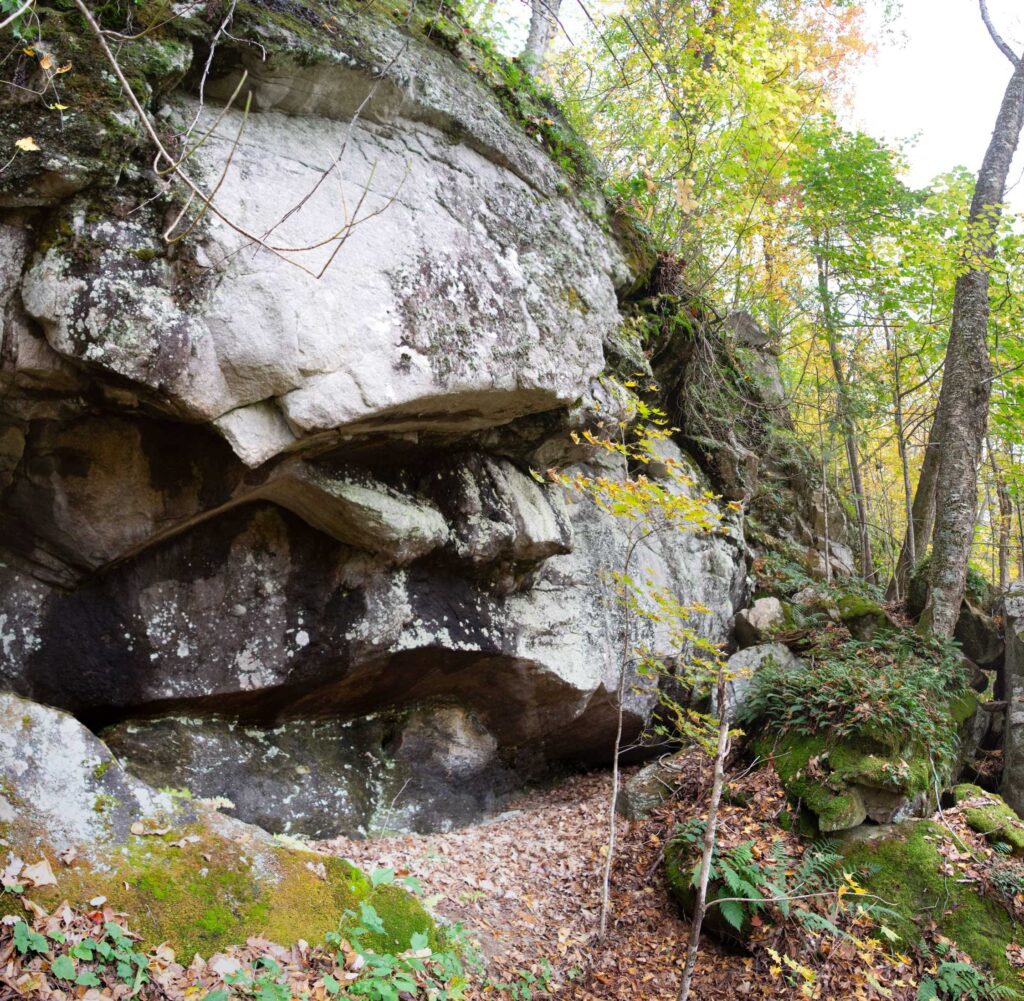
That day I got an email from a friend with a screenshot of Vermont’s LIDAR topographic map. This map was of another area but it prompted me to inspect the LIDAR map of my hibernaculum search area. The LIDAR maps showed no unusual topography at the sites I had visited, but nearby were some pits and mounds that looked unnatural. I made GPS waypoints of the pits and labeled them “Diggings.” I waited three nights to give the AudioMoths a chance to record whatever was calling at the second site and then returned with Galen to retrieve them and explore the Diggings.
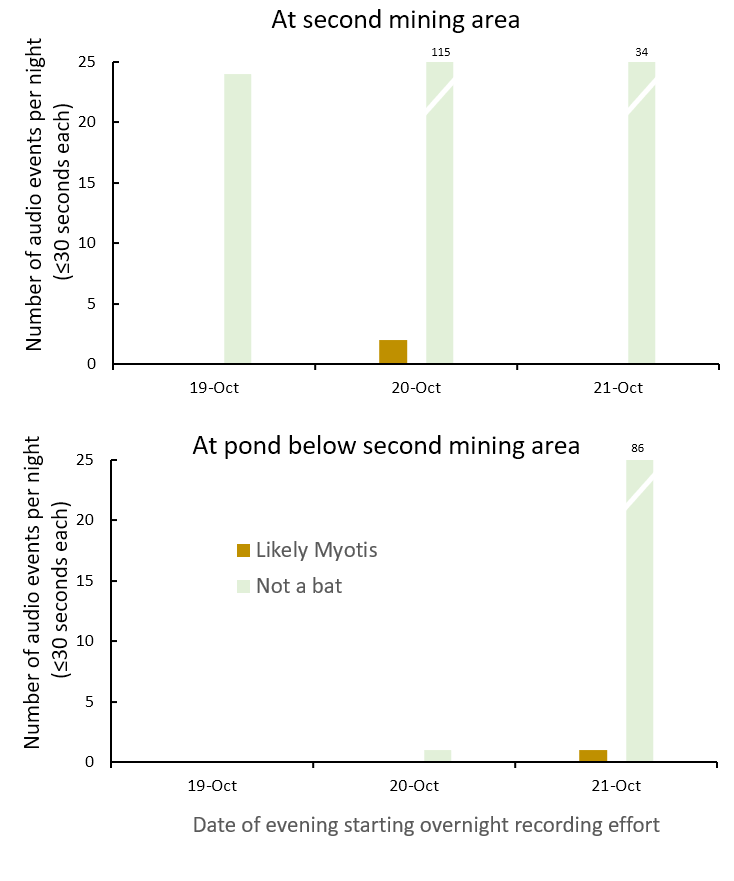
Data from the second site confirmed the result from the first site. Bats were not doing much either in the woods near the cliffs or near a pond (Figure 7). When we retrieved the AudioMoths from the second site Galen explored higher on the cliffy hill but found no bigger caves or evidence of mining. We set off up the ravine for the Diggings.

We were immediately impressed when the phone told us we had arrived at the waypoints for the Diggings. House-sized blocks of quartzite broken from the cliffs over the millennia were piled along the trail. The jumble created “caves” deeper than anything we had seen so far. We found ourselves in a small gap in the forest surrounded by steep slopes and tall, dripping quartzite cliffs. Ferns covered the ground and the boulders and we began to refer to the place as The Grotto. Then Galen’s face froze as he looked over my shoulder. He found no words so I turned around to look into a perfect round mine entrance almost as tall as I am and deep enough to be dark inside (Figure 9).
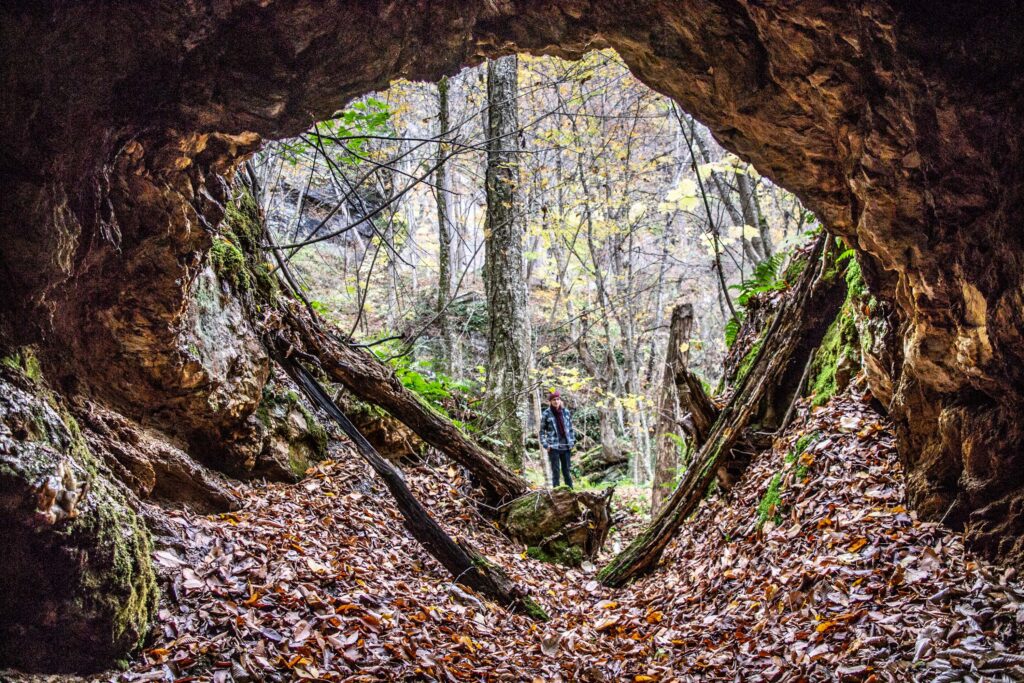
The adit was only about 25 feet long and appeared to have led to a vertical shaft that was now filled in. There was no way for bats to get deep enough to hibernate. We had finally found a mine, but it was not a viable hibernaculum.

Across The Grotto were two deeper caves. These were formed by huge fallen blocks of quartzite and had no evidence of drilling. These could have been explored or cleaned out by miners but might be unrelated to the mining activity. They were both at least 30 feet long and we did not follow them far enough to learn whether the horizontal tunnel went a lot farther. These might have been deep enough to protect bats over winter but we didn’t see any bats or guano.
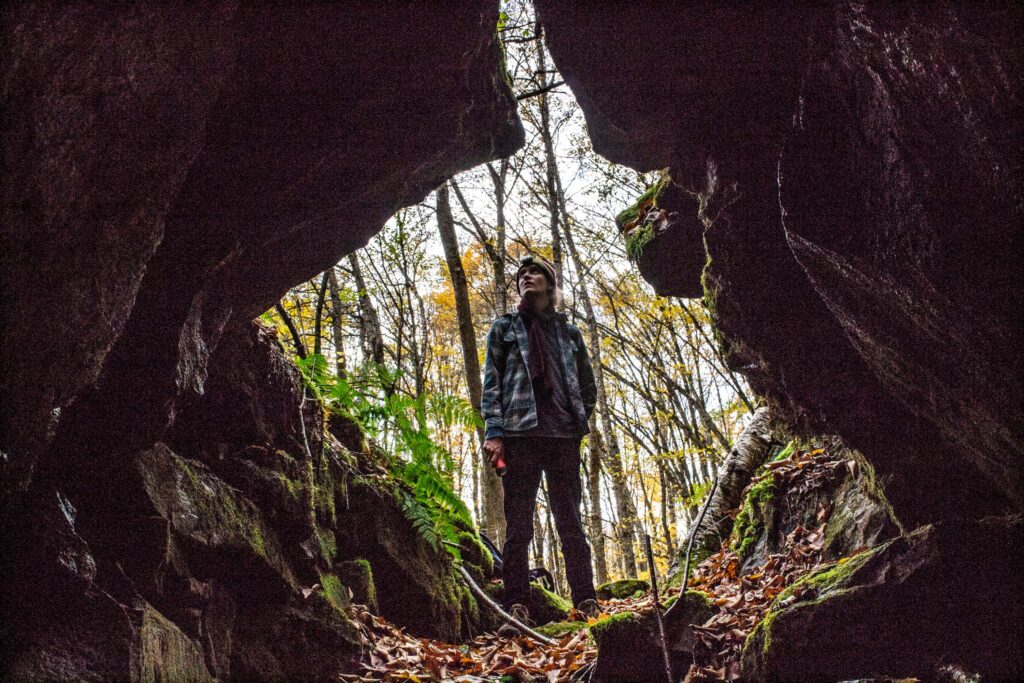
I had seen enough and started to deploy the AudioMoths. This time I had three AudioMoths and hung them around The Grotto within a couple hundred feet of each other. As usual, Galen climbed up to explore the base of the cliffs. As I was swapping batteries and SD cards, Galen called down to report three findings. He calmly listed: a deep pit, an iron bar inserted into the bedrock, and a sign that said, in effect, “This is the cave you are looking for.”
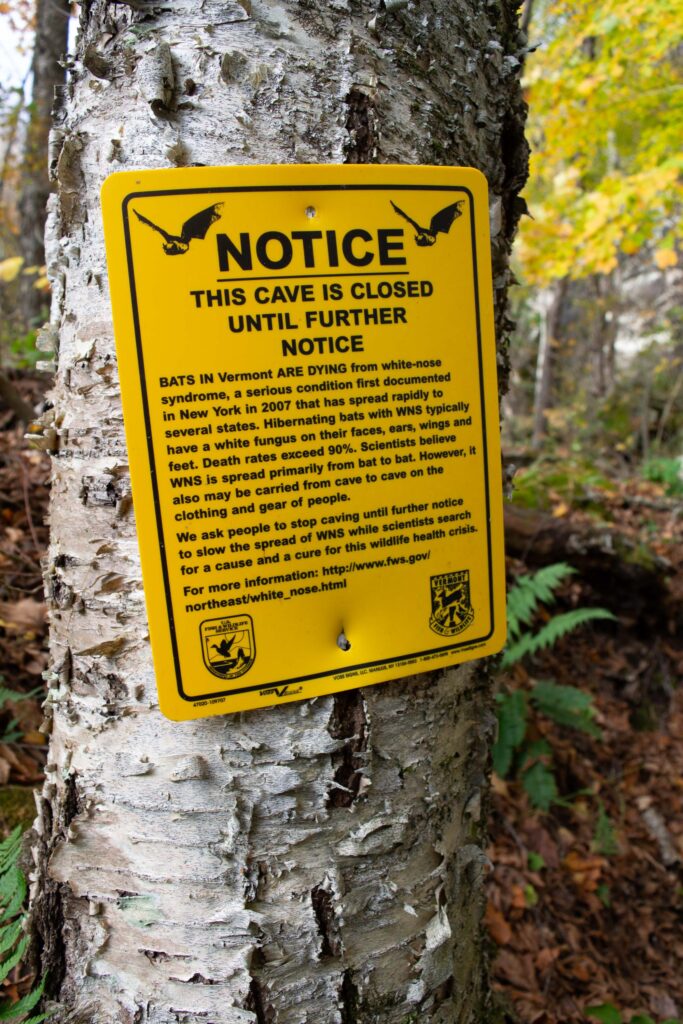
I thought he must be joking, but I joined him and there it was. And so ended a 13 month search for the elusive Indiana bat cave. I finished deploying the AudioMoths, one of them right next to the signed mine pit.
Five days later I returned at dusk to retrieve the AudioMoths and listen for bats with the Echo Meter Touch 2. I listened for an hour after dark and heard one bat call and it was not an Indiana bat. This slim result was confirmed by the data on the three AudioMoths (Figure 13).
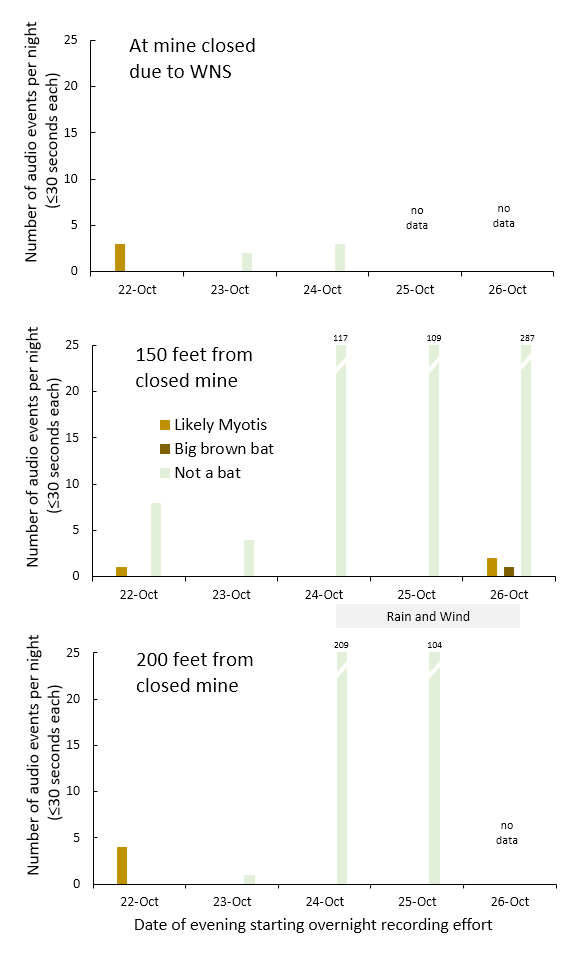
All three AudioMoths recorded what might have been a single Myotis bat on October 22 (Figure 13). Then at least two bats were recorded on October 26. Otherwise, only noise from rain, wind, and who knows what was recorded. This result does not support the idea that lots of Indiana bats are using the mine they are known to have used in the past. There could be bats in the mine that we never heard, or the bats might have flown at times the AudioMoths were not listening. But maybe the entire colony of Indiana bats using this mine succumbed to white nose syndrome. Or maybe the few Myotis we recorded are Indiana bats and will spend the winter in the mine and maybe next year there will be more.
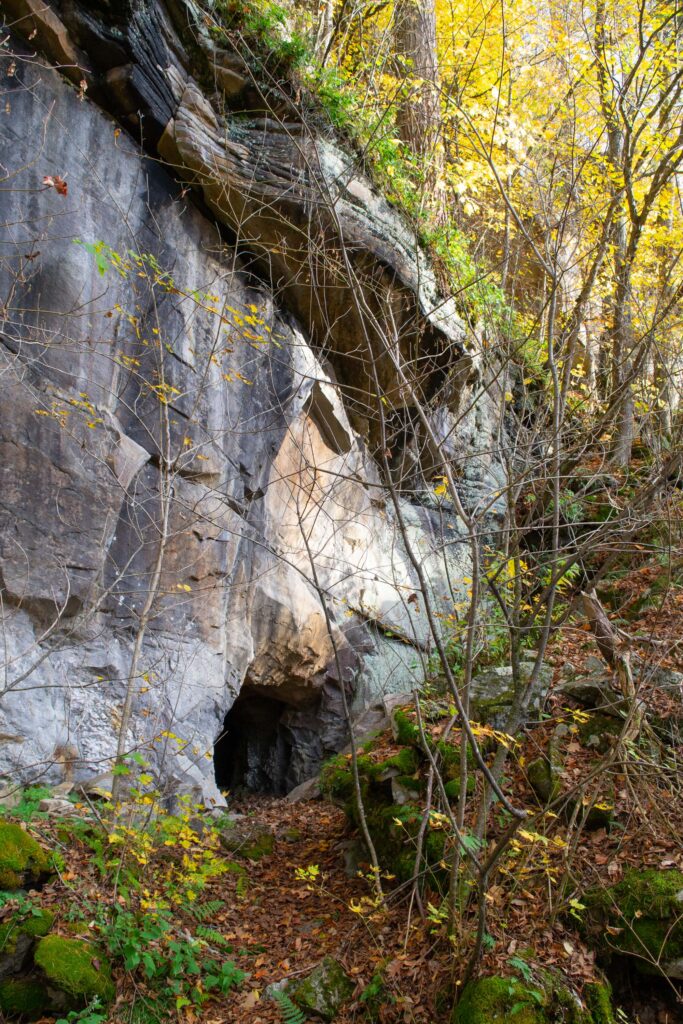
Certainly a lot of people know about these mines, but it was fun to find them without any help. (Give it a try!) It was also good to learn that you should not use cheap microSD cards in AudioMoths. The configuration I used works well for recording bat calls but it seems that noise from rain and wind will always offer the threat of prematurely filled SD cards and thousands of non-bat audio recordings to winnow out. The configuration I used for all of these recording sessions is here (human readable) and here (machine readable).


Hej wowo vilken blogg så mysigt med grottor.